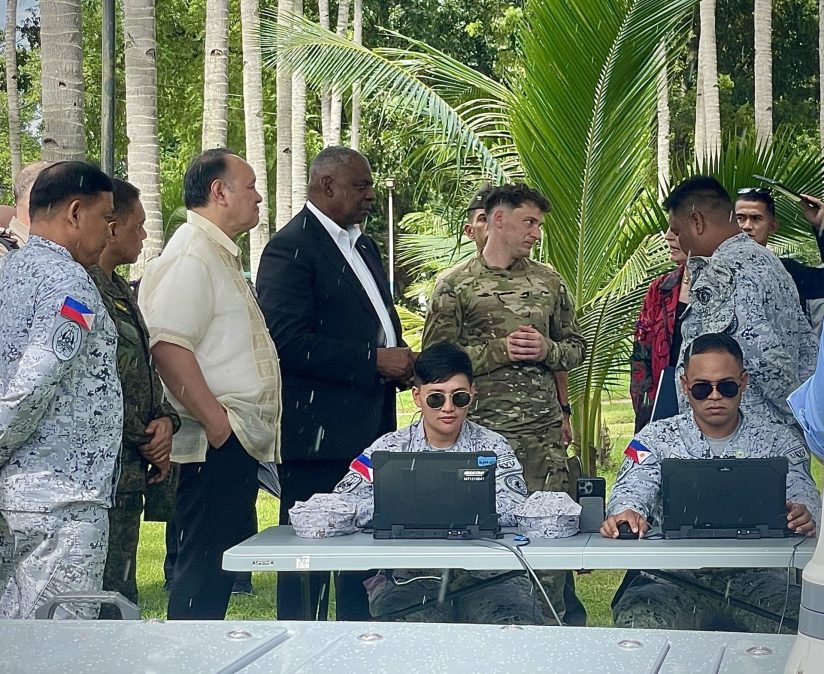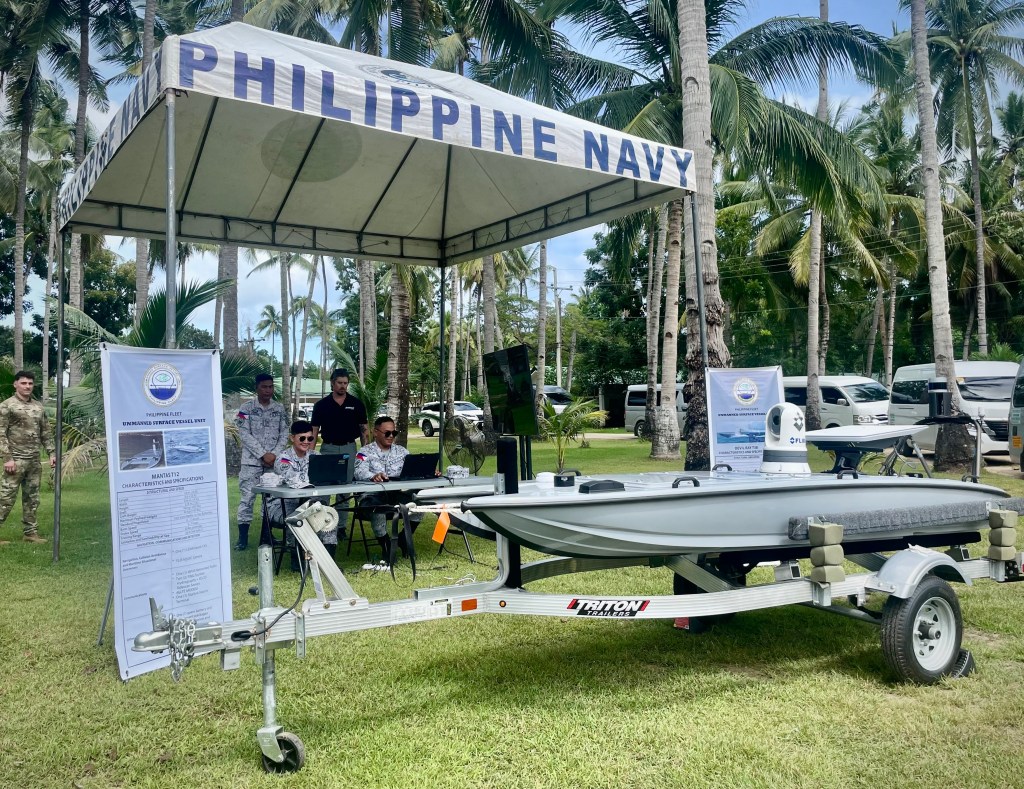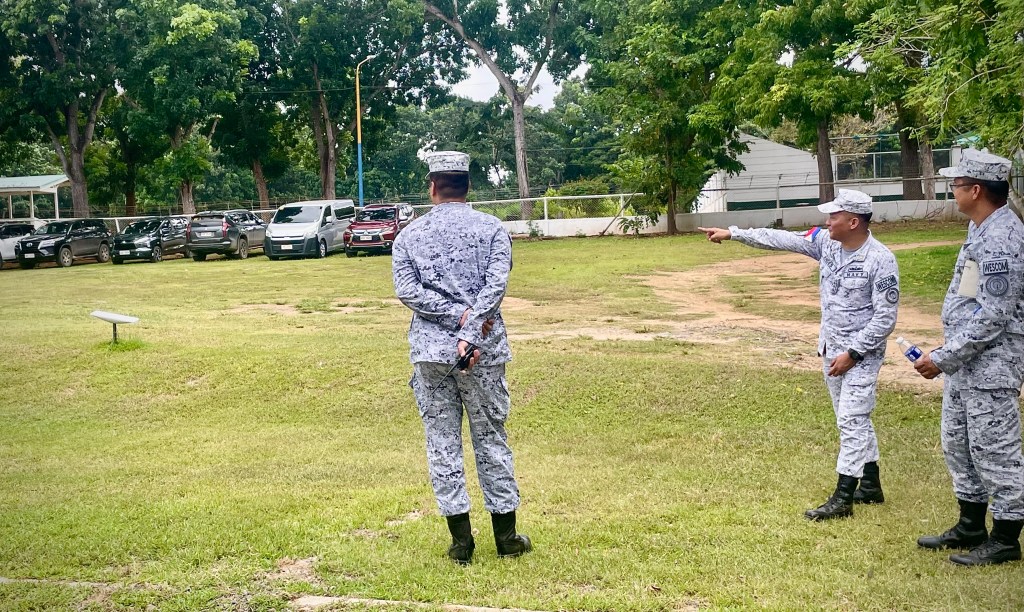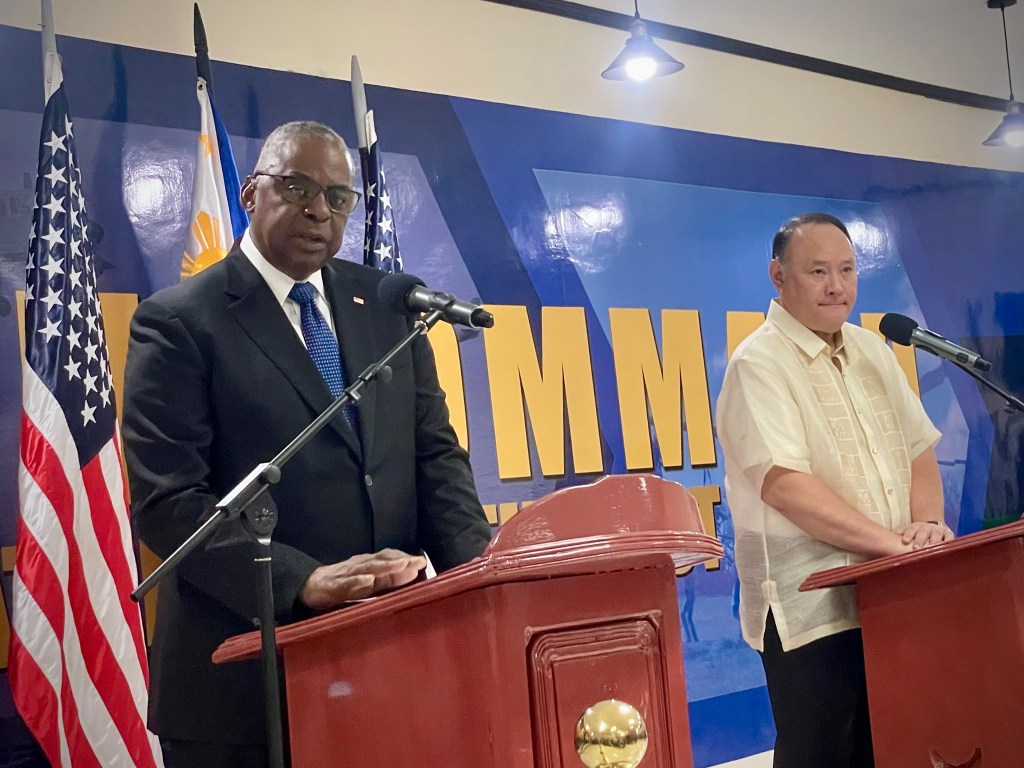Austin, Teodoro convene in Philippines to discuss Starlink-enabled drones, future tech cooperation, China

PALAWAN PROVINCE, Philippines — Defense Secretary Lloyd Austin joined his top counterparts at the Armed Forces of the Philippines’ Western Command headquarters in Palawan on Tuesday, where he observed a demonstration of uncrewed surface vessels their militaries are currently developing and discussed other bilateral technology-driving activities that are being conducted from the base.
“Our cooperation continues to grow. That means deepened information-sharing, combined maritime activities, joint training and capacity building. And we can do even more in the future,” Austin told American and Philippine reporters in a press briefing.
This marked Austin’s second stop in the Philippines during his fourth trip to the island nation — the most any U.S. defense secretary has made to that country to date. At the press briefing, Philippines Secretary of National Defense Gilbert Teodoro said Austin requested to pay a personal visit to WESCOM on this stopover.
On the ground at the headquarters, his team toured the C2 Fusion Center and observed in-development drone and interoperability technologies that the two militaries are jointly refining. That center is one of several built by U.S. Indo-Pacific Command in the Philippines to enhance information-sharing and collaboration.
“I just watched the Philippine Navy demonstrate the capabilities of a T-12 unmanned surface vessel. The T-12 is one of several unmanned capabilities funded and delivered this year through U.S. security assistance,” Austin said.
On the sidelines of that event, U.S. Marine Corps Staff Sgt. Logan Hampton briefed DefenseScoop on some of the intricacies of that platform.

“It’s made by Martac, which is a U.S. company, and it’s called the Mantas. It’s a 12-foot unmanned surface vessel. It has redundant comm pathways for over-the-horizon and local — so, line of sight. Then it has autonomous avoidance, and then it has a clear camera for a [intelligence, surveillance and reconnaissance or ISR] payload,” Hampton said.
The drones are primarily deployed to help increase the military forces’ maritime domain awareness. They operate as a sort of littoral monitoring station that can be sent out and then feed back data and imagery to inform commanders about operations and incursions at sea.
When equipped with all the add-on assets and packages available, according to Hampton, the USVs can reach a range of about 30 nautical miles.
“So this unit is a developmental unit. They have four of those — two of them in ISR configuration, two in a sonar configuration. One of them is actually on the water in Oyster Bay here that’s conducting surveys now. And they have a larger vessel — that’s a T-38 — that’s a 38-footer that it’s in [Subic Bay right now], and it’s being controlled by these two operators here. So, both boats that are on the water right now are being controlled by Phil Navy personnel [who are] USV operators,” the staff sergeant told DefenseScoop.
Notably, the USVs are enabled partially via Starlink capabilities powered by Elon Musk’s SpaceX satellites, which Hampton called “a force multiplier.”
“It makes everything easier — very plug-and-play. You can see there’s a mini Starlink right there that’s powering them right now, for the internet … as they’re controlling from afar. And then there is a maritime Starlink on each of the vessels and this Fusion Center being ran by Starlink. So, it’s pretty useful,” Hampton said.

In Hampton’s view, this work is a strong example of how the U.S. and Philippine militaries are facilitating pathways to strengthen inoperability in real-world missions.
“We’re doing AAR — or after-action reviews — and we’re just, together, on the Philippines and U.S. side, just trying to develop this as quick as possible,” he said.
Hampton expected to be stationed in Palawan and working in this capacity until sometime in the first quarter of 2025. However, he emphasized that — while this is all unfolding in partnership with American forces — these are strictly the Philippines’ capabilities.
“We don’t control them. We are partners, and we help them with enhanced cooperability and integration. But this is theirs. So, I can’t tell them, like, ‘Hey, go do this. Go do that.’ It’s all about building relationships and working by, with and through the partners. And it’s their show. We’re just here to support,” Hampton said.
Later, at the press briefing, Austin confirmed that “many more platforms like this” will likely be delivered to the Philippines in the near term — particularly through the $500 million in foreign military financing he announced during his last visit to the nation.
The military allies are currently puzzling out the platforms and capabilities the U.S. will supply — but officials suggested an early focus will be on cyber and asymmetric capabilities.
“We want to make sure that we’re doing everything that we can to help [Teodoro] increase his domain awareness, his ability to protect his sovereign territory and his interests — and cyber plays a critical role in that respect. You saw evidence of that earlier today when the T-12 was on display out there. And the … T-12, as you know, a fundamental part of that is the ability to command and control that using cyber capabilities. We have to protect those capabilities,” Austin told DefenseScoop.
“And we have to ensure that also that as we acquire more of these systems, that our supply chains are protected, and that we meet the demands as conditions change and things evolve,” he added.
Building on that, Teodoro told DefenseScoop that his national government is in the process of developing convergence measures to protect the country’s critical infrastructure, domestic supply chains and telecommunication systems from vulnerabilities that they could face now and in the future.

In response to questions from Philippines-based reporters, the defense secretaries said that they could not speculate on whether these and other high-stakes U.S.-Philippines joint military pursuits will carry on after Donald Trump is inaugurated as America’s next president in January.
“But I believe that this will remain an important country to us for many, many years. And the strength of our alliance, I think, will transcend changes of administration going forward,” Austin said.
Teodoro noted that the U.S. is a treaty ally, so his nation “would like certainty or guarantee with our bilateral relations.”
“But we should feel also on the other side of the coin, equally, with our anticipating of the possible and what will happen [with regard to the] United States next year, we should be calling out what [Chinese President Xi Jinping] is thinking about in so far as China is concerned — because the alternative factor, a positive factor, which has caused this alliance to be as robust as it is, is Chinese overreach and aggression in this party of the world,” Teodoro said.
Amid intensifying coercion in and around the South China Sea, he further said that Chinese military personnel have increasingly been denying his nation access to its exclusive economic zone in the West Philippine Sea.
“They have really placed a lot of these pseudo-military vessels disguised as Coast Guard vessels, hence, maritime vessels in the areas of the West Sea. And they have been very aggressive in their information operations against the Philippines,” Teodoro said.




